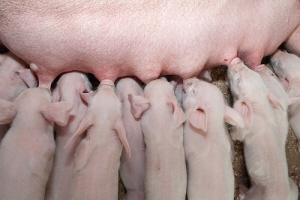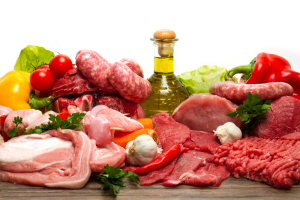



Allendale: US Meat Supply vs Global Demand
ANALYSIS - From an overall meat demand perspective, the world market is a major driver and a key reason why the US has been trading at extended price levels the past few years, writes Sarah Mikesell, ThePoultrySite senior editor.In 2011, the IMF lowered the GDP numbers a little bit, but the US is expected to see average growth - in the 1 to 2 per cent range for 2012, said Rich Nelson, Allendale director of research, in late January at the Allendale Ag Leaders Outlook Conference.
"The US is not going to be a big driver for growth, in terms of meat demand in the world right now. It is, of course, everybody else," he said. "The world as a whole is about 2.5 per cent on the low end up to 4 per cent in generated investments for GDP growth. This is overall growth in terms of the economy, not population. So population plus higher income is a very, very big driver."

Where is the growth coming from? Nelson said there are some new buyers, which have shown up in the past five years affecting meat demand. African and Arab nations are seeing dramatic growth right now, and that is expected to continue.
Japan is a traditional buyer and used to be the main customer for both US beef and pork. South Korea has shown strong growth, but most important to the US is China.
"No matter who you talk to regarding China, the issue is massive growth," Nelson said. "Yes they may be dropping from 8.9 per cent growth - to maybe 8.1 per cent, but we really don't care. They have tremendous growth in income and population."
As incomes climb higher, people change their diet from base breads to meats. Which begs the question, "What type of meat-based growth are we going to see now?" Nelson says the best growth over the next few years will be seen in poultry.
Per person consumption of poultry is roughly 25 pounds per year (carcass basis). Poultry consumption growth is likely to be 6 to 7 per cent over the next four years in China, South Korea and developing countries.
Higher per person consumption

The world has more people, with more income and they're eating more per person. Nelson said this is important for growth in the meat segment in general.
"More mouths will be eating more food is great for poultry. There are no problems with religious restrictions and poultry is grown in every area of the world," he said.
The second meat growth area is pork. Traditional customers like Japan and South Korea will grow, but China could be a developing customer. China normally supplies most of their own pork, but their 5 per cent growth expected over the next four years could require more pork than they can produce.
The next question is "Who's going to supply it - is it going to be the US, Brazil or the EU?"
Five years ago, 65 per cent of US exports went to three countries - Japan, Mexico and Canada. And today, 58 per cent of US exports go to China, Japan and South Korea.
Profits = Pork Industry Expansion
Expansion is the key issue for pork. Compared to prices from 2011, costs on a per head basis are dropping, providing a good opportunity for strong prices and strong profits.
"In 2010, we got $13.00/head profits. And in 2011, there were $6.00/head profits, which was not a whole lot," he said. "As of January 11, 2012, on a conservative basis, profits are at $11.00/head. So we've had three years of profits."
In the hog industry, traditionally after two years of profits, producers start to expand. So the only question right now is, "When will expansion start?"

"Expansion is the driver to watch. So, we're watching the breeding herd," Nelson said. "If you look at the past few years, we've had a problem - a dramatic liquidation in the industry due to high grain costs. The December Hogs and Pigs Report showed that we're running about 0.4 per cent over last year, which is not a big expansion for the hog industry."
Nelson noted that while US producers were sending lots of sows to slaughter, they were replaced with very productive gilts. Therefore, productivity is now running 1.5 to 2 per cent over 2011. Growth is coming from the breeding herd itself in terms of productivity.
"This tells us clearly for 2012 that we'll have more pork produced," Nelson said. "Here's what's interesting - as far as planned farrowings, the number has been down for the last few years, but September-November saw a slight increase. What really puzzled me was March - May expectations, which are actually running lower than last year. I don't think it's going to happen - it's certainly not what the profits imply."
Hog Expansion - How much and where?
Assuming the USDA survey was correct, expectations call for a moderate increase the first half of the year, and the second half of the year shows almost the same type of numbers, with a 1.3 per cent increase by the fourth quarter.
"A 1.5 per cent increase in production is outlined for 2012," he said. "Considering demand and the sharp drop in competing meats for this year, it's not a bad number. In fact, the amount of pork that's going to hit the US consumer is not going to be 1.5 per cent. It's going to be lower than that."
As for exports, expect a slight demand pull. China is the leader for production and their production dwarfs everybody else. In fact, it dwarfs the next three top people in line - EU-27, US and Brazil - combined.
"What's amazing is, even though they're converting to corporate-style hog production, China is still incredibly inefficient as an industry. Over half the hogs are what we call 'backyard pigs'," he said. "But China does have a 3.6 per cent increase expected for 2012 production."
Nelson believes the US will continue to have the same level of exports to China as in 2011 because of the dramatic growth still happening in China.
"They also have a corn crop, which they need the hogs for. So they have big demand for both corn and hogs," he said. "But more important for the US is that China's consumption is going to increase next year to 3.6 per cent - that's a massive jump, as far as the meat world goes."
The next large pork producer is the EU, and we are all aware of the serious financial problems they've experienced of late.
"As a whole, the EU is in a recession right now, and their producers are cutting back to match it," Nelson said. "As a result, our number two pork producer in the world is actually seeing lower production."
The US is expected to have a moderate 1.5 per cent increase.
Brazil, a serious pork producer and a serious competitor to the US, is expected to see a 2.1 per cent increase in production.
Overall, China's consumption is expected to match their increase. The EU will be down, leaving the US and Brazil to divide available export growth. From a US perspective, Nelson said this almost cancels out completely the pork expansion currently underway.
"Once the US has higher exports and starts selling to new customers, they will keep buying from us," he said. "We're not going to lose our old or new customers. In fact, our numbers - which are extremely conservative - are saying the US will have a moderate 2 to 4 per cent increase for pork exports."
How much meat for the US consumer?

Once you take exports out of the supply situation, how much meat will there be for the US consumer? That's really the key driver for the 2012 US meat picture.
"We have to admit to some problems for red meats. The US consumer has been shifting their buying to white meats - to chicken and turkey," Nelson said. "That's a problem, and we all must admit it. As for beef consumption, the US has been asking for a little less beef each year. What's more interesting is we're going to actually produce much less meat this year than consumers are asking for. So they may be asking for a little bit less, but we're going to drop much more."
Expectations for meat indicate pork will see a 1.5 per cent increase. Based on USDA expectations, beef will drop by 6 per cent. Again noting USDA numbers, chicken, pork's main competitor, will be down 4 per cent this year.
"The chicken industry has done a poor job of planning expansion and contraction the past four years. Right now, their shareholders are incredibly angry," Nelson said. "They started expanding right in the face of the 2011 grain price rally; they didn't have their grain hedged. They also expanded in front of the 2008 grain price rally. This recent mistake has kind of crippled the chicken industry for 2012."
Total meat consumption will be down 3 per cent. While it may not sound like a lot, it is.
"Keep in mind, even a 1 per cent drop is a big deal to the US consumer and the whole meat industry," he said. "As a result, even though we're in expansion right now for the pork industry, we're going to have a little extra price support. So expect a little artificially higher price for pork."
As a result of these drops in production, in 2012 the US will offer the US consumer the lowest amount of meat since 1984. Nelson says this will create a US meat deficit.
Of note, a key driver for the US market is the US consumer, who has a lot of debt. Unemployment is still fairly high, but Nelson believes the US is in recovery right now.
"We are starting to see slight drops in unemployment, and if you look at consumer spending, it shows that the people who do have jobs are actually back to spending again," he said. "Even though the US consumer is crippled, they're already of a mindset for economic expansion. We're going to offer people much less meat than they want. And they're willing to pay a lot more for it."












